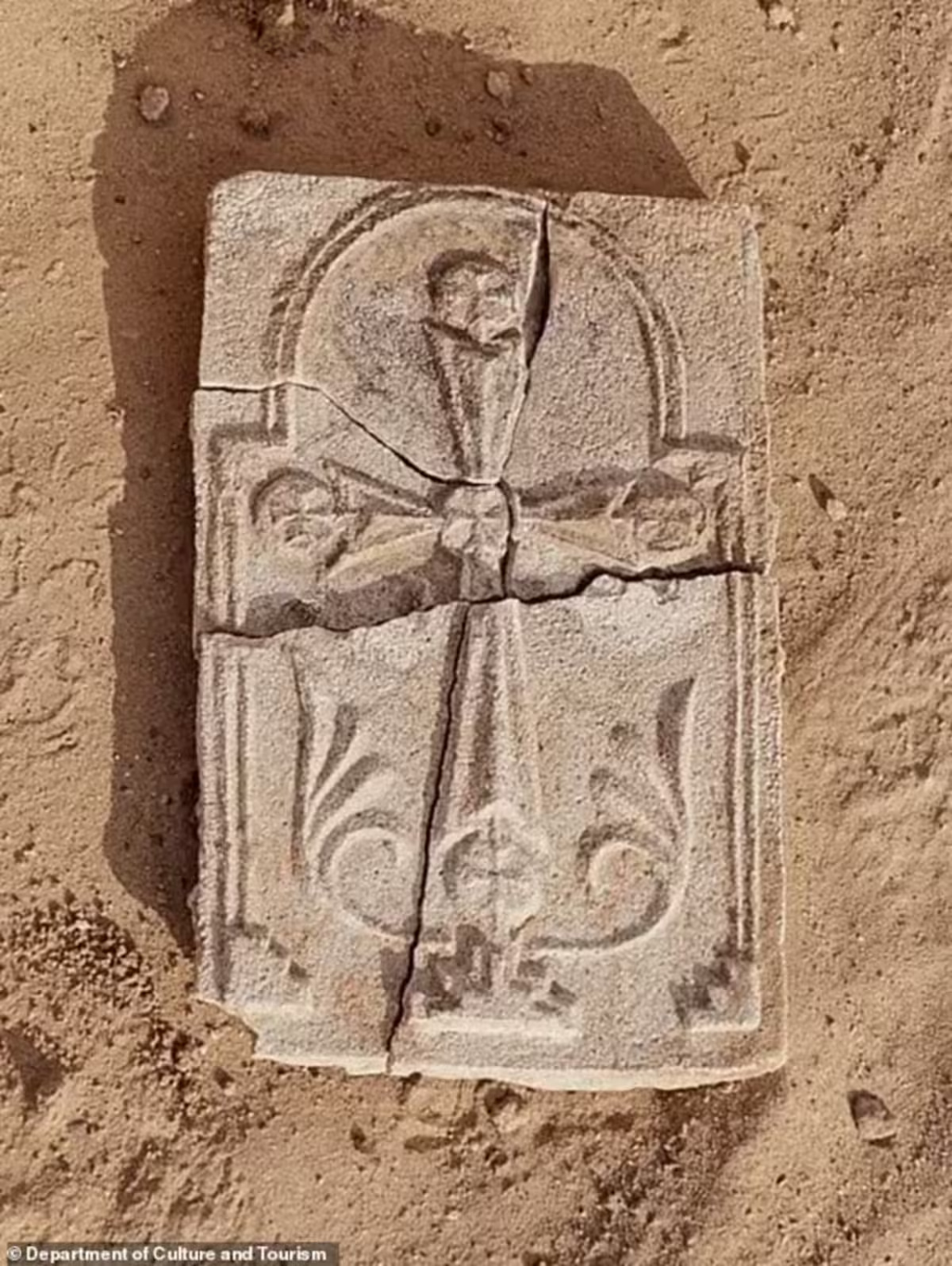Science and Technology
A 1.400-year-old plaque depicting a cross was found on Sir Bani Yas Island in Abu Dhabi. The discovery reshapes our understanding of how far east Christianity spread.
The artifact features a stepped pyramid symbolizing Golgotha, where Christians believe Jesus was crucified. From the base, leaves sprout, reinforcing the symbolism of life.
He was identified among the ruins of a igreja and a monastery, indicating the existence of a flourishing Christian community in the region during the 7th and 8th centuries.
Tectonic plate is slowly breaking apart in the Pacific, putting scientists on alert.
With temperatures of 2.400 °C, winds of 5.000 km/h, and molten iron rain, this giant planet outside the Solar System defies physics and is considered one of the most extreme worlds ever discovered by modern astronomy.
Is it worth investing in a 4K or 8K TV? Cambridge researchers show that super-definition may just be marketing hype.
A new “super-Earth” has been discovered just 20 light-years from Earth: a rocky planet four times larger than the Earth may harbor life and reignites the search for habitable worlds outside the Solar System.
This finding is surprising. At that time, Christianity was most commonly associated with the Levant, Mesopotamia, and parts of Europe.
Finding signs of prosperity on an island in the southeastern Persian Gulf carries profound historical significance.
The landscape of the time was marked by intense change. Islam emerged and spread rapidly across the Arabian Peninsula, ancient pagan traditions endured, and many believed that Christianity was dying out in the region.
However, the presence of an organized community at Sir Bani Yas challenges this assumption. The discovery shows that the faithful not only survived, but adapted and thrived amidst the transformations.
Maria Gajewska, the site’s chief archaeologist, highlighted the strength of this adaptation. “Each element of the cross incorporates regional motifs”, He explained.
For her, this detail indicates that Christianity not only existed, but flourished, absorbing local elements and creating its own roots.
The discovery was also celebrated by the UAE’s cultural authorities. Mohamed Khalifa Al Mubarak, chairman of the Department of Culture and Tourism, called the find “a powerful testament to the deep and enduring values of coexistence and cultural openness“.
He stressed that the evidence supports the idea of a long tradition of peaceful religious diversity in the region, long before the formation of modern states.
The cross measures approximately 27 centimeters long, 17 centimeters wide, and 2 centimeters thick. Archaeologists believe it may have served as an object of veneration, possibly fixed to a wall before which the faithful knelt in prayer.
The find joins others from this excavation season, including ceramics, glassware, and a small sea-green bottle. This bottle, experts say, may have been used to store rose oil or water.
Hager Al Menhali, an Emirati archaeologist, told The National newspaper how she discovered the piece. She said the plaster was face down, and one detail caught her attention.
On the back was a distinct fingerprint, possibly left by the person who molded the plasterboard.
The excavations also revealed elaborate structures. The limestone and coral walls, combined with cisterns for water storage, indicate a relatively comfortable lifestyle.
This reality suggests that the residents did not live in extreme isolation, but in an organized community.
Evidence suggests that senior monks resided in courtyard buildings, attending church for ceremonies or using the spaces for spiritual retreats.
Sir Bani Yas’s community was affiliated with the Church of the East, a Christian branch that extended from the Middle East to China.
The discovery expands understanding of how the faith expanded, connecting the Persian Gulf to routes that brought Christianity to India and other parts of Asia.
The first evidence of a church and monastery at Sir Bani Yas was identified in the early 1990s.
More recently, in 2022, another similar monastery was discovered in Umm Al Quwain. Similar structures have also been discovered in Kuwait, Iran, and Saudi Arabia.
Despite advances in research, it remains unclear why settlement on the island declined. One hypothesis is that the fragmentation of the Eastern Church itself, marked by internal schisms, contributed to its weakening.
Even so, excavations indicate that Christians and Muslims coexisted peacefully, maintaining commercial and social relations. So far, there are no signs of conflict or natural disasters to explain the abandonment.
What surprises archaeologists most is the state of the ruins. The buildings are clean, with little sign of collapse.
This suggests that residents may have left in a planned manner, perhaps with the intention of returning, rather than as a result of a forced escape.
Further research, including radiocarbon analysis, should yield new answers. The plan is to expand the excavations into the courtyard houses and, in the future, integrate the archaeological site with a visitor trail.
Al Mubarak highlighted that these findings strengthen society’s connection with its past and inspire generations to value the spirit of unity and mutual respect.
The Sir Bani Yas cross, therefore, is not just an ancient object. It symbolizes a story of resistance, adaptation, and coexistence that illuminates a little-known chapter of Christianity in the Persian Gulf.
With information from Daily Mail.
I have published thousands of articles on recognized portals, always focusing on informative, direct content that is valuable to the reader. Feel free to send suggestions or questions.
© 2025 Click Oil and Gas – All rights reserved
This website uses cookies to improve user experience. Learn more
